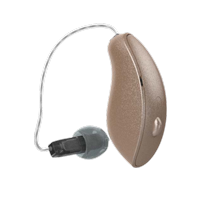Hearing loss is an incredibly common disability, but it is one that is invisible. That makes understanding it or accommodating to people who suffer with hearing loss a bit more difficult. There is also a stigma attached to hearing loss (and the need for hearing aids): so much so, that only about 20% of people who could benefit from hearing aids actually use them. Additionally, people suffering from hearing loss wait an average of 10 years before addressing it with hearing aids or other intervention.
Hearing aids are expensive and usually not covered by medical plans, so that is one reason that hearing loss sufferers shy away from them. Another reason is that they are afraid they will be ugly or obvious to others, or they may be afraid to admit there is a problem.
There are a few misconceptions about hearing loss, however, that will be helpful to address so you can better understand the challenges and navigate to solutions.
Misconceptions About Hearing Loss
1. Hearing loss only affects older people.
Though hearing loss is more common in the elderly, hearing loss affects people of all ages and can be caused by a variety of factors, including birth complications. Most commonly, hearing loss is a result of loud noise exposure, which can come from a loud work environment, or even listening to music too loudly.
2. Hearing aids are an instant fix.
Hearing aids are a tool that help the brain recognize and interpret sound. If a person has vision problems, putting on a pair of glasses can often immediately restore sight. With hearing aids it’s a little bit more complicated. Once the right hearing aids are chosen, the audiologist may need to do a bit of adjustment before the best hearing experience is achieved.
3. Talking louder can help deaf people to hear you.
Often people think that hearing loss is just like the volume is turned down on a person’s hearing, but that isn’t exactly the case. For someone suffering from hearing loss, it is as if you are speaking into a broken microphone: the sound is distorted no matter what the volume. Speaking louder will usually not help.
4. Hearing loss can be reversed with surgery or medicine.
As of now, permanent hearing loss is unfortunately irreversible by any method. This makes it all the more crucial to protect your hearing and prevent hearing loss in the first place. Annual hearing screenings can catch hearing loss long before you notice it yourself—so that is another important way to intervene before hearing loss begins to interfere with your life.
5. Deaf people only listen when they want to.
If a person with hearing loss seems like they are ignoring you, it may just be because they really didn’t hear you! Also, people who struggle with hearing loss also struggle with listening fatigue because they have to concentrate to understand sounds that are effortless for other people. When listening fatigue sets in, they may need to take a break.
6. Deaf people are good lip readers
Lip reading is hard! Depending on how long a person has been deaf, they may or may not be very good at lip reading. Even the best lip readers are playing a guessing game, so help them out by augmenting your speech with as much body language and gesturing as possible!
7. Sign language is the same everywhere.
Many people don’t know it, but there are about 130 different sign languages, and different spoken languages and countries have their own versions of sign language!
8. Deaf people can’t drive automobiles.
Deaf people can drive too! They do need to be much more cautious of their surroundings and pay very close attention visually to what is happening around them.
9. Deafness is hereditary.
Hearing loss and deafness come from a wide variety of factors, including childhood illness, accidents, loud noise exposure, congenital defects or ototoxic medication/chemicals. Deafness is rarely genetic.
10. Hearing aids are big and ugly with unsightly wires.
Modern hearing aids are much smaller than ever before and can even be controlled by your smartphone. Many of them are so tiny they fit deep into the ear canal and are virtually invisible! They also come in all shapes, sizes and colors and can be wireless.
Here at California Hearing Center we are committed to your hearing health. Call us today to set up an appointment for a hearing screening. We can discuss hearing aid options with you and work with you to find one that fits your budget.
TWO LOCATIONS TO SERVE YOU BETTER
San Mateo
88 N. San Mateo Drive
San Mateo, California, 94401
Phone: (650) 342-9449
Fax: (650) 342-4435
Email: info@calhearing.com
San Carlos
1008 Laurel Street
San Carlos, California, 94070
Phone: (650) 342-9449
Fax: (650) 342-4435
Email: info@calhearing.com









